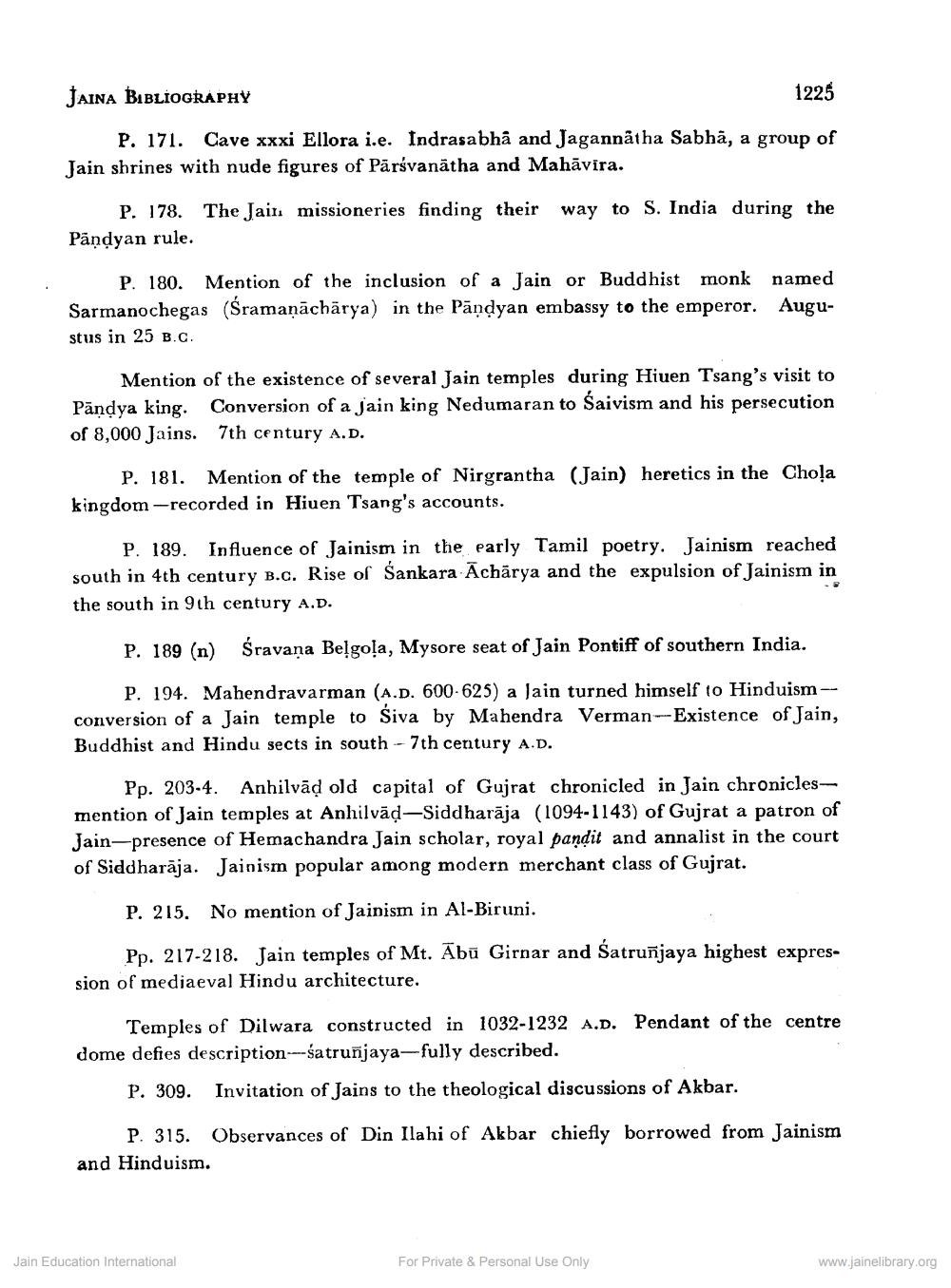________________
JAINA BIBLIOGRAPHY
1225
P. 171. Cave xxxi Ellora i.e. Indrasabha and Jagannatha Sabhä, a group of Jain shrines with nude figures of Pārsvanātha and Mahāvira.
The Jain missioneries finding their way to S. India during the
P. 178. Pāņdyan rule.
P. 180. Mention of the inclusion of a Jain or Buddhist monk named Sarmanochegas (Šramaņāchārya) in the Pāndyan embassy to the emperor. Augustus in 25 B.C.
Mention of the existence of several Jain temples during Hiuen Tsang's visit to Pāndya king. Conversion of a jain king Nedumaran to Saivism and his persecution of 8,000 Jains. 7th century A.D.
P. 181. Mention of the temple of Nirgrantha (Jain) heretics in the Chola kingdom -recorded in Hiuen Tsang's accounts.
P. 189. Influence of Jainism in the early Tamil poetry. Jainism reached south in 4th century B.C. Rise of Sankara Acharya and the expulsion of Jainism in the south in 9th century A.D.
P. 189 (n)
Sravana Belgoļa, Mysore seat of Jain Pontiff of southern India.
P. 194. Mahendravarman (A.D. 600-625) a Jain turned himself to Hinduism -- conversion of a Jain temple to Siva by Mahendra Verman-Existence of Jain, Buddhist and Hindu sects in south-7th century A.D.
Pp. 203-4. Anhilvād old capital of Gujrat chronicled in Jain chroniclesmention of Jain temples at Anhilvād-Siddharāja (1094-1143) of Gujrat a patron of Jain-presence of Hemachandra Jain scholar, royal pandit and annalist in the court of Siddharāja. Jainism popular among modern merchant class of Gujrat.
P. 215. No mention of Jainism in Al-Biruni.
Pp. 217-218. Jain temples of Mt. Abū Girnar and Satruñjaya highest expression of mediaeval Hindu architecture.
Temples of Dilwara constructed in 1032-1232 A.D. Pendant of the centre dome defies description---satruñjaya-fully described.
P. 309. Invitation of Jains to the theological discussions of Akbar.
P. 315. Observances of Din Ilahi of Akbar chiefly borrowed from Jainism and Hinduism.
Jain Education International
For Private & Personal Use Only
www.jainelibrary.org




